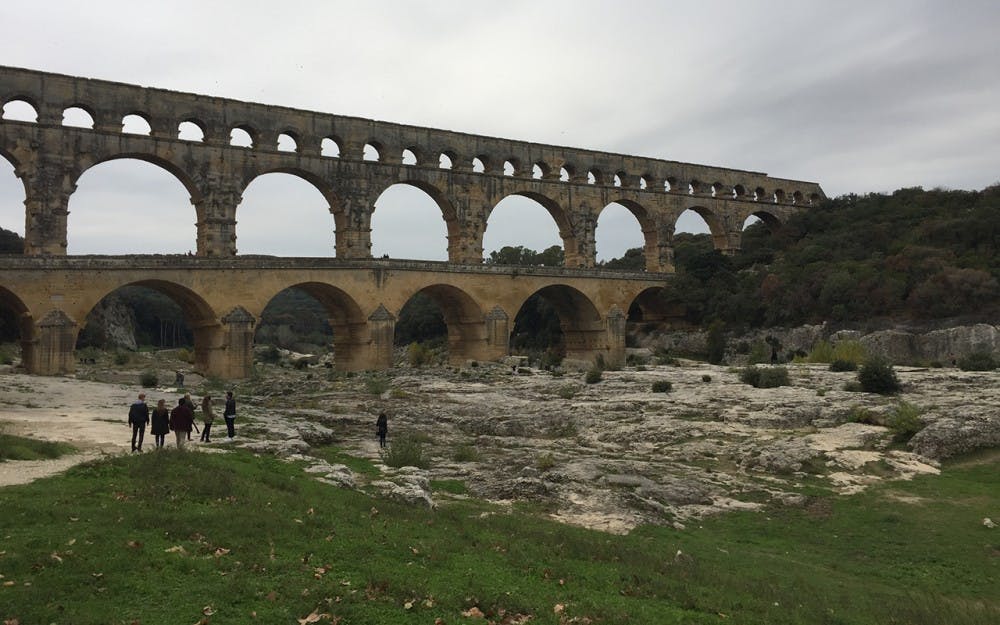After multiple weekends in a row of traveling around the country combined with university classes and impending exams, it was a relief to take it easy the past couple of days.
My academic program had a scheduled trip to visit Arles, France, and a few ancient Roman sites in the area, so I happily signed up for the day trip, knowing someone else would be responsible for organizing transport and tickets.
I guess I know now how it feels to be the parent planning a family trip and the stress that comes along with it — thanks, mom and dad.
Saturday morning I hopped on the bus and we made our way to the first stop: Glanum, France.
Ancient Glanum was founded in the sixth century B.C. by the Gauls and was later taken over by the Romans in 27 B.C. to become a relatively prosperous, but small, city in Provence.
Today, we are left with the ruins of the multi-cultural city, and I got to walk through them as Romans, Greeks and Gauls did thousands of years ago.
Truthfully, a lot of it just looked like crumbling stone and I took the guide’s word for it as he identified which ruins belonged to which ruling people.
Our next stop was Arles, once the provincial capital of the Roman Empire and now a city full of ancient history.
Most everything in France looks old, but Arles takes the cake. We wandered through the cryptoportiques, which are underground tunnels once used as the foundation for a forum.
Even though there were no human skulls to be found on the site, I couldn’t help but flashback to my visit to the Parisian catacombs as we wandered through the dimly lit and damp passageways.
The most impressive piece of history I saw in my short trip to Arles was the Amphitheatre.
Right in the heart of the old town, it towered over the houses flanking it and we climbed to the top to get a panoramic view of the city.
It amazed me how well preserved it was after thousands of years of use and that it continues to hold events today.
We finished off the Roman ruin expedition with the Pont du Gard, a part of the Nîmes aqueduct built in the first century AD.
It stands over the Gardon river and after its use as water transportation passed, the bridge was used as a toll way for traffic.
We walked along the footbridge built alongside it and unsuccessfully tried to get any part of it in a selfie because it was so huge.
One of my goals coming to France was to visit Roman ruins, and this specific one was at the top of my list.
It’s amazing to even look at something that people two thousand years ago looked at as well, and to be able to walk on it was surreal.
This kind of history is only preserved in a few parts of the world, and I know how lucky I am to have such easy access.
As for the next stop on my ancient history tour? Lascaux Paleolithic cave drawings.
It seems that 2,000-year-old history was only the beginning — I need to see some 20,000-year-old history now.
rarosens@indiana.edu
@rachrosenstock




